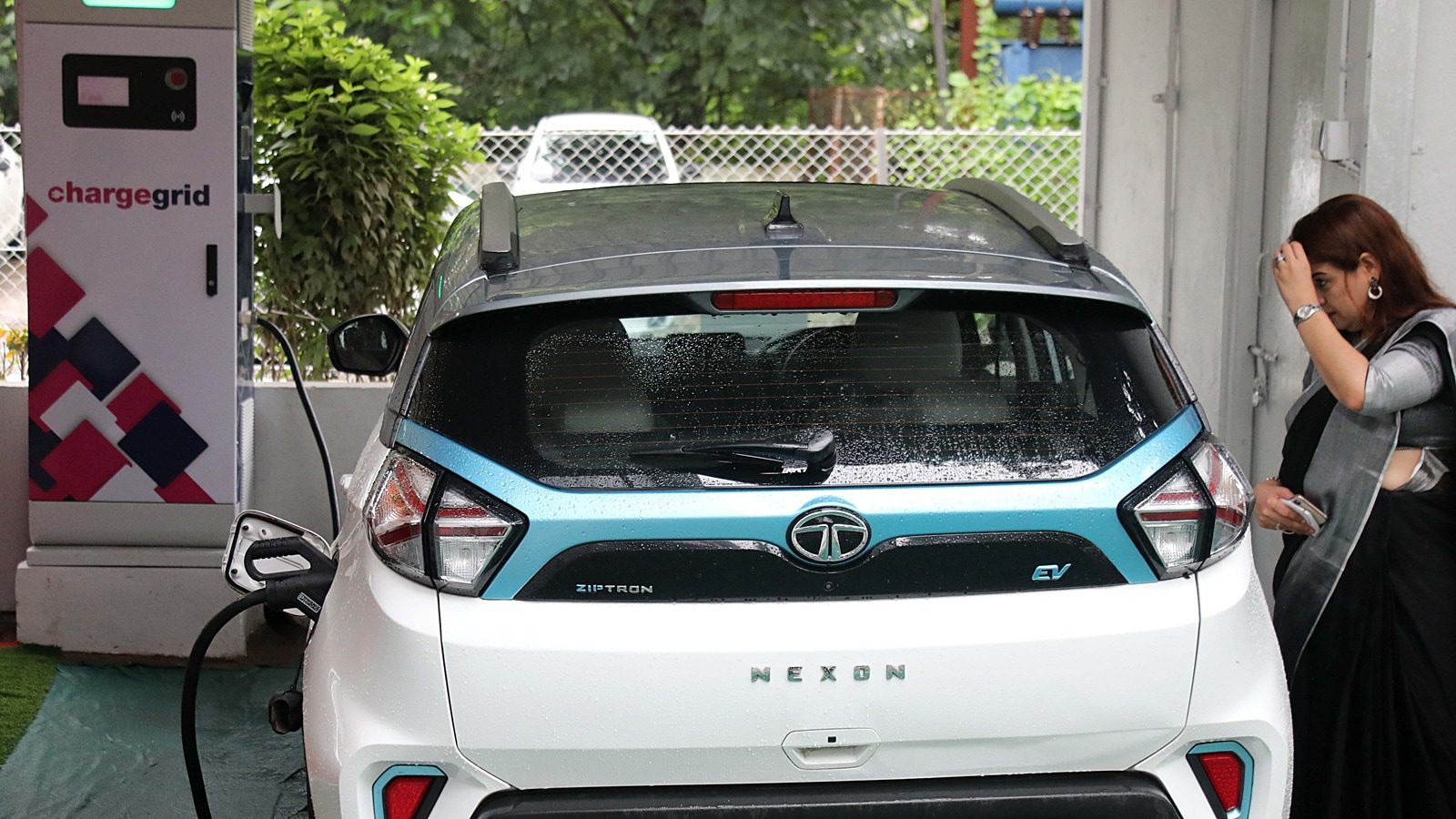Over the past year, India’s electric vehicle (EV) policy has undergone a quiet but significant pivot: electric cars are no longer centre-stage, while e-trucks have emerged as the new priority.
The first major signal came in September 2024, when the PM E-DRIVE scheme was rolled out without any incentives for electric four-wheelers — unlike the preceding FAME subsidy. Earlier this week, the NITI Aayog reinforced this stance, arguing that measuring progress in e-mobility through cars is “not… the right metric” for India.
Instead, the government is now turning its attention to electrifying trucks, which make up just 3 per cent of India’s vehicle fleet but contribute a third of all transport-related carbon emissions and over half of particulate pollution. A new Rs 500-crore subsidy aims to support 5,600 e-trucks on Indian roads.
Despite support, electric cars remain a hard sell
Electric cars simply aren’t selling fast enough in India to move the needle — largely due to their relatively high cost and persistent range anxiety. India’s progress in electrifying four-wheelers “has been weak compared to the global scenario,” the NITI Aayog report said.
In 2024, the share of electric cars in total four-wheeler sales — or EV penetration — remained low at just 2 per cent, according to New York-headquartered think tank Rhodium Group. In contrast, the EV penetration rate in the four-wheeler segment stood at 47 per cent in China, 23 per cent in Europe, 10 per cent in the US, and a striking 17 per cent in Vietnam — up from just 3 per cent in 2022.
The sluggish pace in India comes despite several tailwinds — the FAME scheme subsidised at a cost of Rs 537 crore over 22,600 electric car purchases between 2019 and 2024, several states offered road tax and registration waivers, battery costs fell sharply, and a domestic EV supply chain took shape under the PLI scheme for auto components.
The volumes case against electric cars
There’s another reason — “While 75% of Indian vehicles are two-wheelers, only 13% of these vehicles are cars… Hence, measuring progress in the transition to electric mobility by only looking at cars, as done in developed countries, would not be the right metric in a country dominated by two-wheelers,” the NITI Aayog report said. In the two-wheeler segment, the EV penetration rate was 6 per cent in 2024-25, according to JMK Research.
Story continues below this ad
In addition to cars making up a smaller share of vehicles overall, large cars costing over Rs 10 lakh account for just 2 per cent of India’s vehicle fleet. When identifying which segments most warrant policy interventions to boost supporting infrastructure, the report noted, “Personal cars would come lower down in the priority primarily because they compose a relatively small share of the vehicle fleet in the country and daily usage is also relatively low.”
That said, the government did launch the Scheme to Promote Manufacturing of Electric Passenger Cars in India in…
Disclaimer
We strive to uphold the highest ethical standards in all of our reporting and coverage. We 5guruayurveda.com want to be transparent with our readers about any potential conflicts of interest that may arise in our work. It’s possible that some of the investors we feature may have connections to other businesses, including competitors or companies we write about. However, we want to assure our readers that this will not have any impact on the integrity or impartiality of our reporting. We are committed to delivering accurate, unbiased news and information to our audience, and we will continue to uphold our ethics and principles in all of our work. Thank you for your trust and support.
Website Upgradation is going on. For any glitch kindly connect at 5guruayurveda.com




